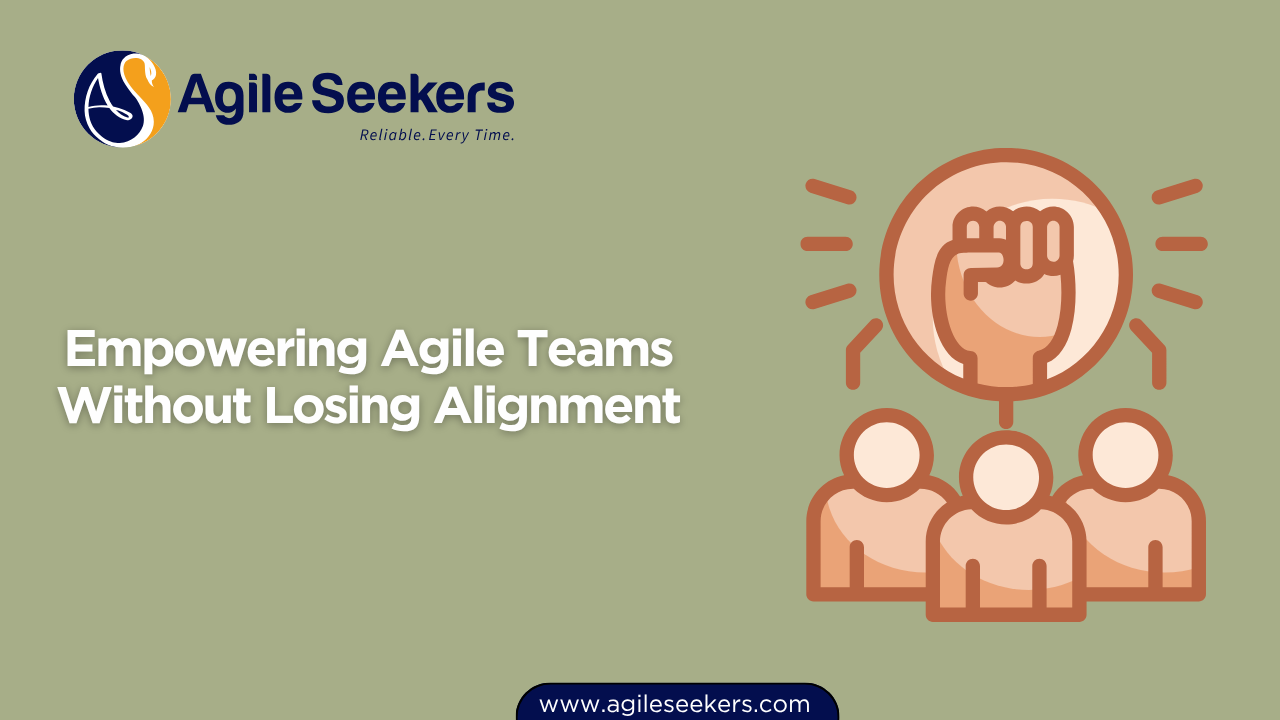Empowering Agile Teams Without Losing Alignment

In SAFe® (Scaled Agile Framework), architectural decision-making is no longer the exclusive domain of a central authority. Instead, it’s a shared responsibility—designed to empower Agile teams while still ensuring alignment across the enterprise. This shift allows teams to innovate faster while staying connected to strategic business and technical objectives.
But how does this decentralized model of architectural governance actually work without descending into chaos? And how do organizations balance autonomy with enterprise-wide alignment?
Let’s explore how SAFe supports decentralized architectural decision-making through clearly defined roles, lean governance, and continuous collaboration.
Why Centralized Architectural Control No Longer Works
Traditional architectures relied on centralized, top-down decisions made by a few enterprise architects. While this model offered consistency, it often introduced bottlenecks. Teams waited for approvals, decision cycles were long, and innovation was slow.
With the rise of Agile and continuous delivery, centralized architectural control has become a limiting factor. Agile teams need the autonomy to make timely decisions in response to customer feedback, technical constraints, and emerging needs. This means decision-making must be distributed—but without fragmenting the overall system design.
SAFe’s Perspective: Decentralized Decision-Making with Architectural Guardrails
SAFe solves this dilemma through "architectural guidance"—principles, patterns, and constraints that enable decentralized teams to operate within a coherent enterprise structure.
Architects in SAFe don’t dictate every technical decision. Instead, they set intentional architecture and provide a Lean Governance framework to guide teams. This ensures decisions made locally still align with long-term goals.
This model supports:
-
Fast flow of value, because teams can move independently.
-
Architectural coherence, because guardrails prevent divergence.
-
Informed trade-offs, as architects and teams collaborate regularly.
Learn more about this foundational shift in the SAFe Architectural Runway.
Core Principles That Enable Shared Decision-Making
-
Decentralize Where Possible, Centralize Only When Necessary
SAFe encourages teams to own decisions that affect their local context. Shared services, cross-cutting concerns, and systemic risks remain centrally governed. -
Intentional vs. Emergent Architecture
-
Intentional Architecture sets the technical foundation—platforms, APIs, data standards—that teams build on.
-
Emergent Architecture allows teams to refine and adapt their components based on feedback.
-
-
Just-in-Time Decision-Making
Delaying decisions until the “last responsible moment” allows for the most relevant information to influence architectural choices.
How Architects Empower Teams
Architects in SAFe play a key enabling role:
-
System Architects/Engineers support the ART and ensure the technical direction supports business goals.
-
Enterprise Architects focus on long-term strategy, collaborating with business owners and Lean Portfolio Management.
-
Solution Architects address cross-team concerns on Solution Trains.
Instead of enforcing rules, they provide collaborative technical leadership, aligning teams through Communities of Practice, architecture syncs, and Agile ceremonies.
Explore how these roles interact in SAFe Release Train Engineer certification training, which connects engineering leadership with Agile execution.
Practices That Keep Architecture and Agility Aligned
1. Architecture Syncs
Architecture Syncs are recurring events where architects and team leads align on design challenges and ensure consistency across teams. These discussions help refine direction while respecting team autonomy.
2. Enablers in the Program Backlog
Architectural enablers are added to the backlog to support upcoming features. This helps teams understand the “why” behind infrastructure tasks and plan accordingly.
3. Participatory Roadmapping
Architects actively contribute to program and solution roadmaps. Their involvement ensures that architectural work is visible and synchronized with business priorities.
To master this collaborative planning process, the Leading SAFe Agilist certification training equips leaders with essential tools to align architecture and delivery.
Role of Scrum Masters and Product Management in Architectural Decisions
Empowering teams also means enabling the right conversations between Product Managers, Product Owners, and Architects.
-
Product Owners represent customer needs and help prioritize architectural enablers alongside features.
-
Scrum Masters foster an environment where architectural discussions can happen transparently within the team.
Training like the SAFe Scrum Master certification and SAFe Product Owner/Product Manager certification emphasizes how these roles coordinate effectively in technical decision-making.
Avoiding Common Pitfalls
Without intentional structure, decentralization can lead to:
-
Architecture Drift – where team-level decisions slowly move away from enterprise standards.
-
Duplication of Effort – as teams unknowingly build overlapping solutions.
-
Integration Failures – due to incompatible components and misunderstood dependencies.
SAFe addresses these risks by embedding architecture into the Agile Release Train (ART) planning and execution flow.
To further support this, the SAFe Advanced Scrum Master certification training helps leaders coach teams on how to manage cross-team dependencies and architectural integration points.
Architectural Governance Without Bureaucracy
SAFe promotes Lean Architecture Governance—a lightweight, fast-moving approach that replaces long committees with short feedback loops and real-time collaboration.
This includes:
-
Guardrails for tooling, APIs, and integration methods
-
Agile architecture decision records (ADRs) that document choices transparently
-
Open forums like Communities of Practice for shared learning and innovation
An external reference on Lean Governance from Gartner highlights how minimal controls, when well-aligned, can support both innovation and compliance.
Conclusion: Balance, Not Compromise
Architectural decision-making in SAFe isn’t about choosing between control and chaos. It’s about equipping teams to make good decisions within a clear, shared framework. When architectural roles are redefined to enable rather than restrict, agility and alignment thrive together.
This cultural and structural shift requires a strong foundation in Agile leadership, team enablement, and technical strategy—all of which are supported through SAFe’s role-based certifications. If your goal is to become an enabler of enterprise agility, consider developing the necessary skills through programs like Leading SAFe, SAFe Scrum Master, and SAFe Product Owner/Product Manager.
By distributing authority and reinforcing alignment through architectural guidance, SAFe empowers teams to deliver faster—without losing sight of the bigger picture.
Also read - Why Lean-Agile Architects Focus on Flow, Quality, and Business Alignment
Also see - How Architects Contribute to Lean Portfolio Management and Strategy Execution




















